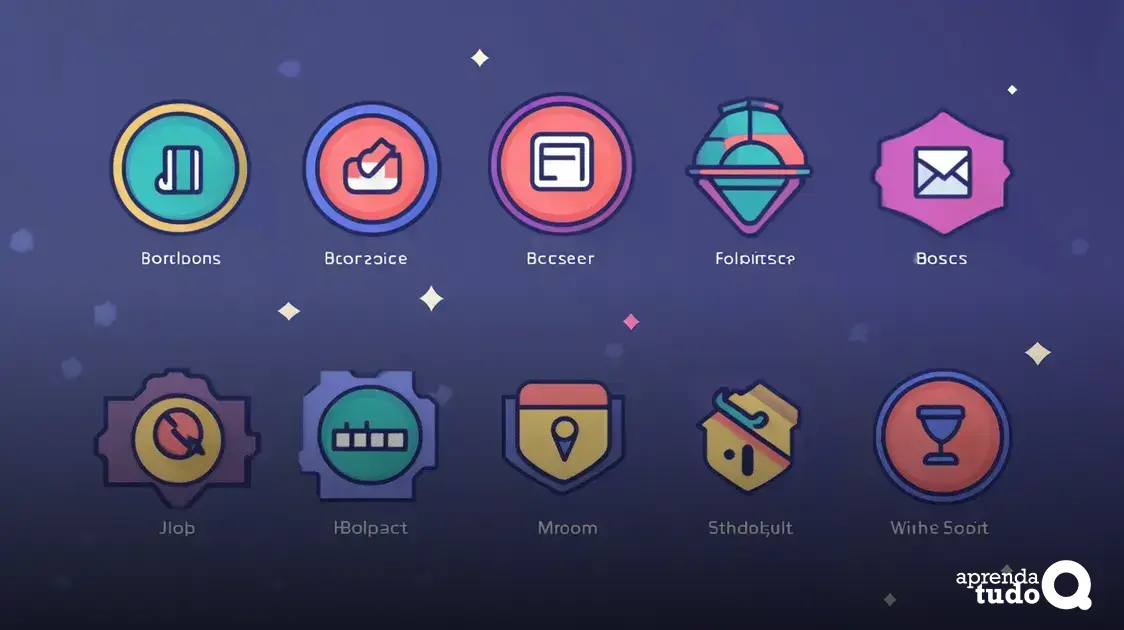Top navigation tools are essential for improving website usability, guiding users efficiently to desired content.
Effective implementation increases user engagement and conversion rates, making it crucial for businesses to adopt best practices and stay updated with future trends in navigation design.
When crafting a user-friendly experience, top navigation tools play a pivotal role.
Understanding Top Navigation Tools
Top navigation tools are essential elements in web design that allow users to traverse websites smoothly.
These tools help visitors find important sections quickly and enhance their overall experience.
Understanding how these tools work is critical for effectively implementing them.
What are Top Navigation Tools?
Top navigation tools typically consist of horizontal menus displayed prominently at the top of a webpage.
They include links to important pages, such as Home, About Us, and Contact.
These tools may also feature dropdown menus that reveal additional links when hovered over or clicked.
Types of Top Navigation Tools
There are various types of top navigation tools to choose from, including:
- Text-based menus: Simple links that redirect users when clicked.
- Dropdown menus: Expands to show more options, providing a cleaner look.
- Mobile-friendly menus: Designs that adapt to smaller screens, ensuring usability on smartphones and tablets.
Importance of Usability
Usability is a key factor in web design, and top navigation tools significantly impact this.
Well-structured navigation aids in creating a logical flow, enabling users to find information without confusion.
This contributes to lower bounce rates and higher engagement on websites.
Best Practices for Navigation Design
To create effective top navigation tools, consider the following best practices:
- Keep it simple: Use clear and concise labels for navigation links.
- Limit the number of items: Aim for 5-7 main categories to avoid overwhelming users.
- Consistent positioning: Maintain the same location for navigation across all pages.
Implementing these practices allows visitors to navigate effortlessly, leading to improved user satisfaction.
Conclusion and Moving Forward
Understanding top navigation tools is the first step towards enhancing your website’s usability.
By selecting the right tools and following best design practices, you can create a seamless navigation experience.
This will keep visitors engaged and encourage them to explore more of your content.
Benefits of Using Top Navigation Tools
Using top navigation tools offers several significant benefits that can enhance the user experience on your website.
By integrating these tools, you can improve how visitors interact with your site, leading to positive outcomes.
Improved Usability
One of the primary benefits of top navigation tools is their ability to improve usability.
A clear, structured menu helps users locate information quickly and efficiently. This reduces frustration and encourages them to stay on your site longer.
Enhanced User Engagement
When users can navigate your website easily, they are more likely to explore different sections.
This increases the chances of engagement with your content and products. Engaging users effectively can lead to higher conversion rates.
Lower Bounce Rates
Top navigation tools help in lowering bounce rates. When visitors can find what they seek without difficulty, they are less likely to leave the site immediately.
A well-designed navigation system can keep users on your page longer, significantly affecting your site’s SEO performance.
Mobile Responsiveness
Many top navigation tools are designed to be mobile-responsive.
This means they work well on smartphones and tablets, catering to users who access websites through mobile devices.
Ensuring your navigation adapts beautifully to any screen size is crucial in today’s digital landscape.
Streamlined Content Management
Top navigation tools not only benefit users but also webmasters. They allow for easier management of site content.
By organising pages logically, site owners can efficiently direct traffic to the most important areas of their website.
Brand Consistency
Implementing these tools can help maintain brand consistency.
A cohesive navigation design across your site reflects professionalism and builds trust with users.
They are more likely to return if they feel secure and confident using your site.
Analytics and Insights
Most navigation tools come with analytics options that allow website owners to track user behaviour.
These insights can inform you about visitor preferences, guiding future updates and modifications to improve user experience continually.
Comparing Popular Top Navigation Tools

When it comes to top navigation tools, various options are available on the market.
Each tool has unique features, making it essential to compare them to find the right fit for your needs. Here are some popular choices:
1. WordPress Navigation Menu
The WordPress Navigation Menu is user-friendly and allows for easy customisation. You can add links, categories, and pages with ease.
It’s a great choice for beginner website owners who want a straightforward setup.
2. Bootstrap Navigation Bar
Bootstrap is a framework that includes a responsive navigation bar. This tool is ideal for developers looking for flexibility.
It adapts well to different screen sizes and integrates smoothly with various HTML elements.
3. Wix Menu Builder
Wix provides an intuitive menu builder that is particularly suited for non-coders.
This tool allows you to drag and drop elements and customize your navigation based on your brand style. It is excellent for quick website building.
4. Squarespace Navigation
Squarespace offers built-in navigation options that match its stylish templates.
This tool is well-suited for visually-driven websites like portfolios and e-commerce stores. It allows seamless integration of navigation within the design.
5. Shopify Navigation
For e-commerce sites, Shopify provides effective navigation tools.
You can create dropdown menus that direct customers to various product categories and collections.
This enhances the shopping experience and can lead to higher sales.
6. Joomla Menu Manager
The Joomla Menu Manager allows for advanced menu configurations.
It supports multiple types of menus and links, making it suitable for websites with complex structures.
If your site includes numerous pages, this could be a perfect choice.
7. Custom HTML/CSS Navigation
For those with coding skills, creating a custom HTML/CSS navigation bar gives you full control over the navigation’s look and functionality.
This approach allows you to tailor the navigation specifically to your requirements.
Comparing these tools can help you determine which navigation solution meets your specific needs and enhances your website’s usability.
Best Practices for Implementing Top Navigation Tools
Implementing top navigation tools effectively is crucial for making sure users have a smooth experience on your website.
Here are some best practices to consider:
1. Simplify Your Menu Structure
A clear and straightforward menu structure is essential. Avoid clutter by limiting options. Aim for 5-7 main categories to make navigation intuitive for users.
2. Use Descriptive Labels
Label your menu items clearly. Use words that describe their function or destination.
Avoid jargon and make it easy for users to understand where they will go when clicking a link.
3. Implement Dropdowns Wisely
Dropdown menus can help in organizing options but should not be overused.
Ensure that dropdowns are easy to open and read. Users should not need to hover for long to see their options.
4. Ensure Mobile Compatibility
Most users access websites on mobile devices. Design navigation tools that are responsive and work well on different screen sizes.
Use a mobile-first approach to ensure usability.
5. Highlight Current Location
Use breadcrumb trails or highlighted sections to show users where they are on your site.
This helps in reducing confusion and allows easy navigation back to previous pages.
6. Test for Usability
Regular testing is essential to evaluate how well your navigation works. Use tools like A/B testing to see which layout is more effective.
Gather user feedback to identify pain points.
7. Keep It Consistent
Consistency is key. Ensure that your navigation looks and functions the same across all pages.
A cohesive design builds familiarity and comfort for users as they navigate your site.
By following these best practices, you can create a top navigation system that enhances user experience, improves engagement, and supports your website’s objectives.
Customizing Top Navigation Tools for Your Website
Customizing top navigation tools for your website can greatly enhance user experience and align with your brand’s identity.
Here are key ways to effectively customize your navigation:
1. Choose a Theme that Matches Your Brand
Select a navigation theme that aligns with your brand’s visual identity.
Use consistent colours, fonts, and styles that reflect your brand image, making it easy for users to recognise your site.
2. Personalise Menu Options
Identify which menu options are most relevant for your target audience.
Focus on including links to popular pages, products, or services that your users frequently visit.
3. Use Icons for Clarity
Including icons alongside text in your navigation can make it clearer.
Icons provide visual cues that can guide users to their desired sections quicker, enhancing overall usability.
4. Experiment with Layout
Test different layouts for your navigation bar.
Consider horizontal versus vertical layouts, and explore the placement of elements such as search bars or call-to-action buttons.
5. Implement Search Functionality
Add a search bar to your navigation if your website contains numerous pages.
This allows users to find what they need without having to browse through multiple categories.
6. Set Up Responsive Design
Make sure your navigation is fully responsive, adjusting seamlessly across different devices.
A mobile-friendly design ensures that users have a consistent and pleasant experience, whether using a desktop or smartphone.
7. Regularly Update Navigation Items
Keep your navigation fresh by regularly reviewing and updating menu items.
Remove outdated links and add new ones based on current trends or changes in your offerings to maintain user interest.
By effectively customizing your top navigation tools, you can create a tailored experience for users that enhances both usability and engagement on your website.
Future Trends in Top Navigation Tools

As technology evolves, top navigation tools are also likely to change.
Here are some future trends that are set to shape how these tools will function on websites:
1. AI-Powered Navigation
Artificial Intelligence is becoming a significant component of web design. Future top navigation tools will incorporate AI to learn user preferences.
This allows for personalised navigation experiences, suggesting relevant pages based on previous visits.
2. Voice-Activated Navigation
With the rise of smart speakers and voice search, websites will adapt to include voice-activated navigation.
Users will ask for directions or seek information using voice commands, making navigation much easier.
3. Gesture-Based Navigation
As touch screens dominate, gesture-based navigation will grow.
Users will navigate through swipes or tapping on the screen, making the site more interactive and user-friendly.
4. Minimalist Design
Future navigation tools will focus heavily on minimalism.
Clean, straightforward navigation will be preferred, with less clutter and more emphasis on essential links.
This will enhance the user experience by reducing cognitive load.
5. Smart Search Features
Search functionality will become more intelligent.
Future tools will include autocomplete suggestions and visual searches, allowing users to find content faster without excessive clicking.
6. Integrated Chatbots
Combining navigation tools with integrated chatbots helps users find what they need by asking questions.
This real-time interaction will guide users to the right pages efficiently.
7. Enhanced Accessibility Features
There will be a greater focus on accessibility.
Future navigation tools will improve support for users with disabilities, ensuring that everyone can navigate websites easily.
These trends indicate that the future of top navigation tools will enhance user experience through personalization, ease of use, and innovative technology.
Case Studies on Effective Use of Top Navigation Tools
Case studies illustrate how various organisations have effectively implemented top navigation tools to enhance user experience and achieve business goals.
Here are some examples:
1. Online Retailer: ABC Fashion
ABC Fashion revamped its website navigation by introducing a clear, hierarchical structure.
They simplified the menu options and added predictive search functionality.
As a result, they saw a 30% increase in user engagement and a 25% rise in conversions within three months.
2. Educational Institution: XYZ University
XYZ University implemented a responsive top navigation bar that adjusts for mobile devices.
By increasing tap targets and simplifying menu items, the university saw a significant drop in user bounce rates by 40%.
Students were able to quickly find course information and resources, improving their overall experience.
3. Travel Website: Explore It
Explore It integrated an interactive dropdown menu that showcased popular travel destinations.
This change led to a 50% increase in page views per visit, as users could easily discover and navigate to various travel packages and offers.
4. Non-profit Organisation: Green Earth
Green Earth established a top navigation tool that highlighted their key initiatives and volunteer opportunities.
They personalised user experiences based on previous interactions, which resulted in a 60% increase in volunteer sign-ups and donations.
5. Technology Company: Tech Innovations
Tech Innovations introduced a mega menu for its product offerings, allowing users to view multiple categories at a glance.
After this change, the company experienced a 45% rise in product page visits and improved customer satisfaction ratings.
These case studies underline the significance of adapting top navigation tools to meet the needs of users while supporting organisational goals.
By studying these real-world applications, other companies can learn how to optimise their navigation effectively.
In Summary: Navigating the Future with Top Navigation Tools
Implementing effective top navigation tools is crucial for enhancing user experience on websites.
The insights from the benefits and best practices discussed highlight the need for clarity, simplicity, and responsiveness in navigation design.
Case studies show that organisations investing in user-focused navigation experience significant improvements in engagement.
This focus on usability also leads to higher conversion rates.
Future trends such as AI integration, voice-activated navigation, and enhanced accessibility will continue to shape the way users interact with websites.
By embracing these changes, businesses can meet the evolving needs of their users.
Continuously refining navigation strategies helps them stay ahead in a competitive digital landscape.






